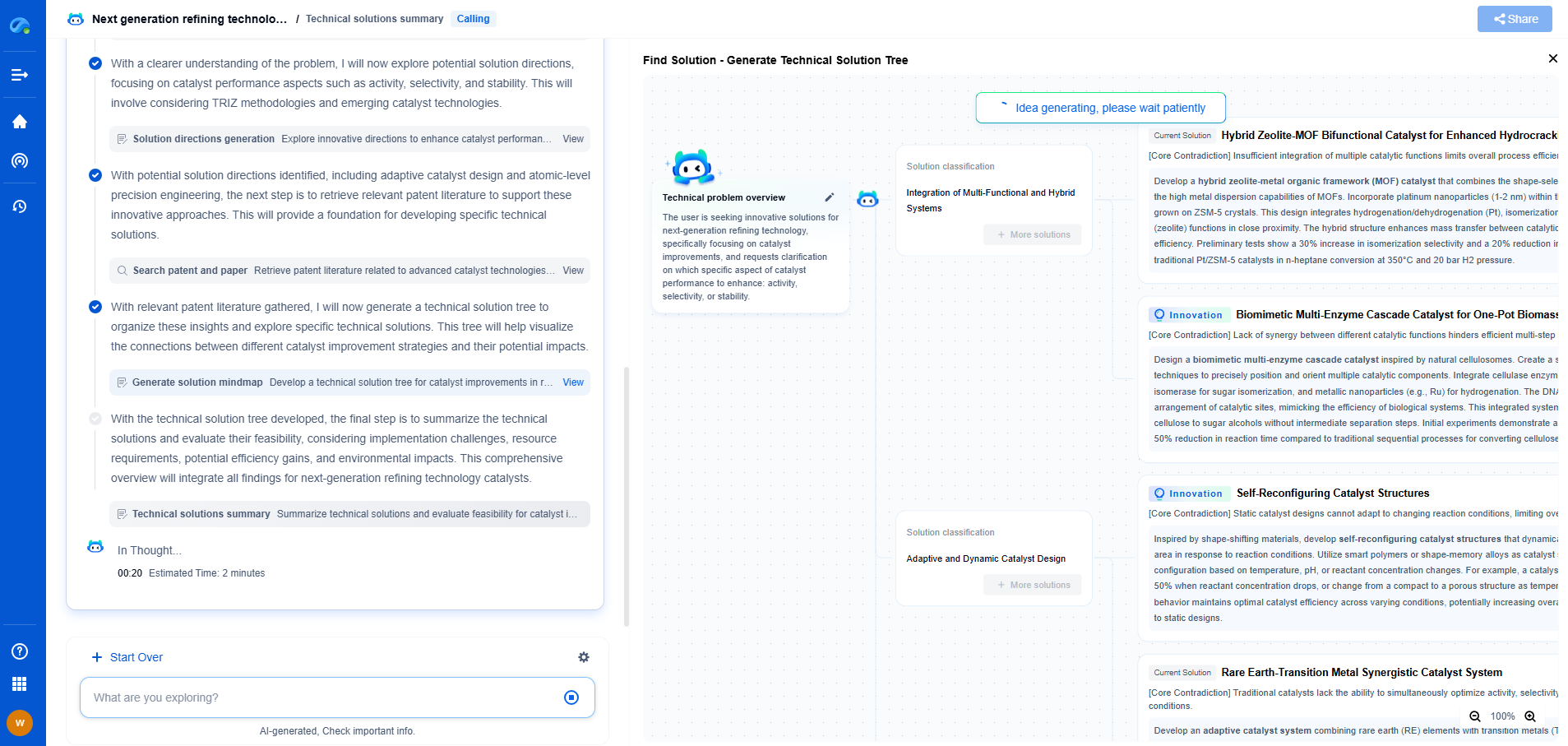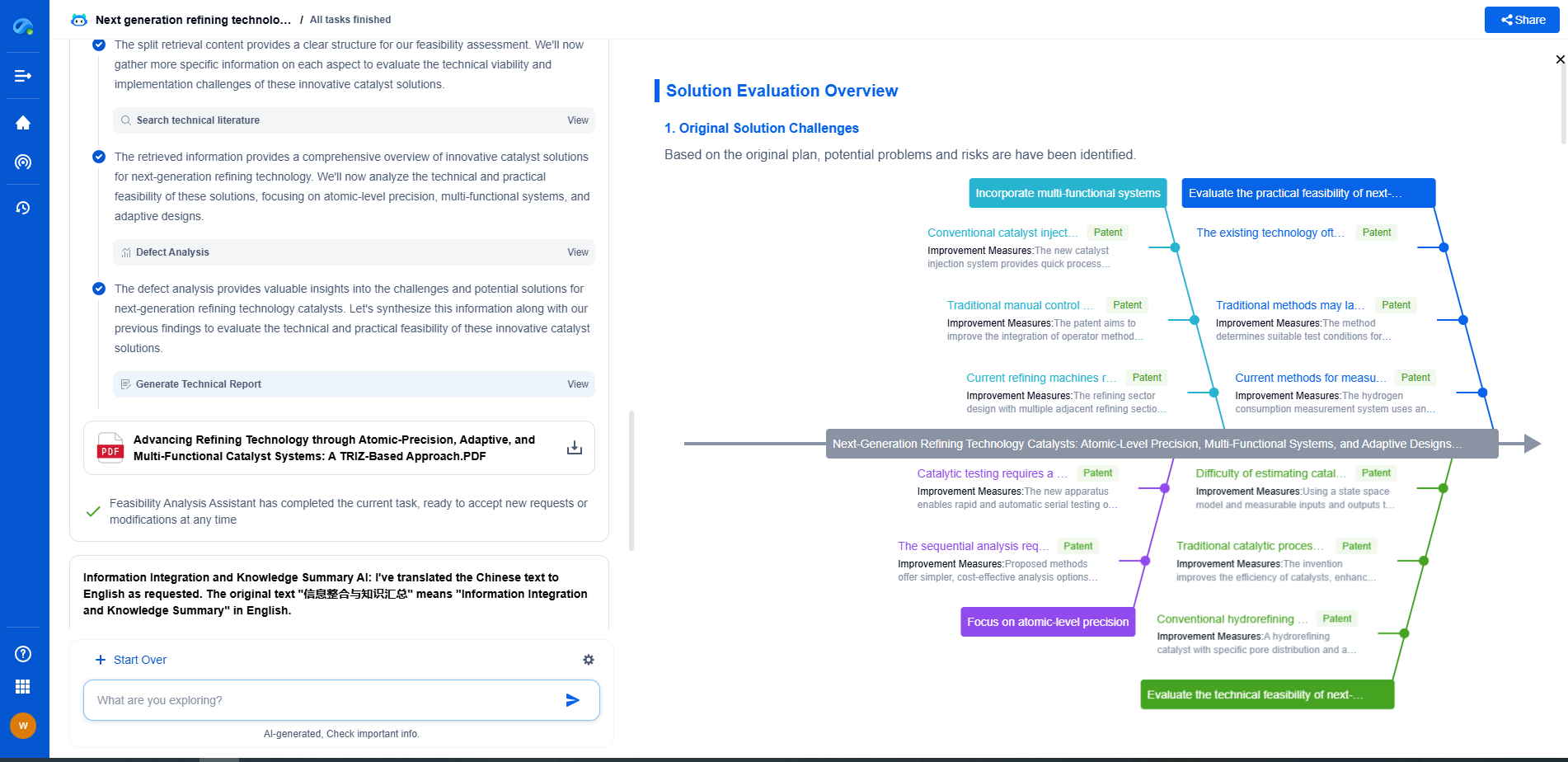What Are the Key Principles of Circuit Design and Optimization?
JUN 27, 2025 |
Understanding Basic Components
At the heart of any circuit are its basic components: resistors, capacitors, inductors, diodes, and transistors. Each of these elements serves a specific function, and their interplay determines the circuit's behavior. Resistors control current flow, capacitors store and release energy, inductors oppose changes in current, diodes allow current to flow in one direction, and transistors act as switches or amplifiers. A sound understanding of these components and how they interact is crucial for effective circuit design.
Schematic Design and Simulation
A crucial step in circuit design is the creation of a schematic diagram. This diagram is a symbolic representation of the circuit, showing how components are connected. Software tools like SPICE allow designers to simulate circuits and predict their behavior before building them physically. Simulation helps identify potential issues, saving time and resources. It’s essential to iteratively refine the schematic, ensuring that it meets the desired specifications and functions correctly under all expected operating conditions.
Component Selection and Sizing
Choosing the right components is vital for achieving optimal circuit performance. Component selection impacts not only the functionality but also the efficiency, cost, and reliability of the circuit. Factors such as power ratings, tolerance, and temperature coefficients must be considered. Additionally, components should be sized appropriately to ensure they can handle the expected voltage and current levels without failure.
Design for Signal Integrity
Signal integrity is a major concern in circuit design, particularly for high-speed or high-frequency applications. Ensuring signal integrity means maintaining the quality of electronic signals as they travel through the circuit. This involves careful routing of traces, minimizing reflections and crosstalk, and managing electromagnetic interference. Techniques such as using differential signaling and controlled impedance are often employed to preserve signal integrity.
Power Management
Effective power management is critical for circuit optimization. This involves designing power supply circuits that deliver the required voltage and current levels efficiently and reliably. Voltage regulators, power converters, and filters are commonly used to manage power distribution. Additionally, minimizing power consumption through techniques such as duty cycling and power gating can enhance the efficiency and longevity of the circuit, especially in battery-powered applications.
Thermal Management
As electronic components operate, they generate heat, which can impact performance and reliability. Effective thermal management is essential to prevent components from overheating. This can be achieved through passive methods like heat sinks and thermal vias, or active methods such as fans and liquid cooling. Designing circuits with thermal considerations in mind ensures they remain within safe operating temperatures.
Testing and Iteration
Once a circuit is designed and prototyped, rigorous testing is necessary to validate its performance. This involves measuring parameters such as voltage, current, frequency response, and signal integrity under different conditions. Testing helps identify any discrepancies between the expected and actual performance, guiding necessary adjustments. Iteration is a natural part of the design process, allowing designers to refine and optimize their circuits based on empirical data.
Conclusion
Circuit design and optimization are complex processes that blend theoretical knowledge with practical skills. By understanding the principles of component interaction, schematic development, component selection, signal integrity, power and thermal management, and thorough testing, designers can create efficient and reliable circuits. As technology evolves, these principles remain foundational, guiding the development of increasingly sophisticated electronic devices.
Accelerate Electronic Circuit Innovation with AI-Powered Insights from Patsnap Eureka
The world of electronic circuits is evolving faster than ever—from high-speed analog signal processing to digital modulation systems, PLLs, oscillators, and cutting-edge power management ICs. For R&D engineers, IP professionals, and strategic decision-makers in this space, staying ahead of the curve means navigating a massive and rapidly growing landscape of patents, technical literature, and competitor moves.
Patsnap Eureka, our intelligent AI assistant built for R&D professionals in high-tech sectors, empowers you with real-time expert-level analysis, technology roadmap exploration, and strategic mapping of core patents—all within a seamless, user-friendly interface.
🚀 Experience the next level of innovation intelligence. Try Patsnap Eureka today and discover how AI can power your breakthroughs in electronic circuit design and strategy. Book a free trial or schedule a personalized demo now.
- R&D
- Intellectual Property
- Life Sciences
- Materials
- Tech Scout
- Unparalleled Data Quality
- Higher Quality Content
- 60% Fewer Hallucinations
Browse by: Latest US Patents, China's latest patents, Technical Efficacy Thesaurus, Application Domain, Technology Topic, Popular Technical Reports.
© 2025 PatSnap. All rights reserved.Legal|Privacy policy|Modern Slavery Act Transparency Statement|Sitemap|About US| Contact US: help@patsnap.com

